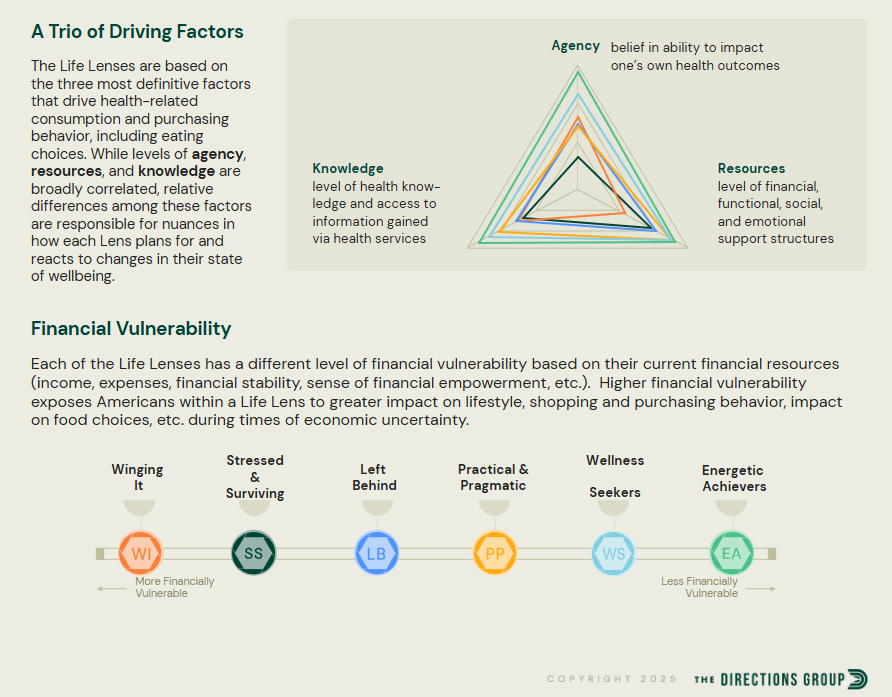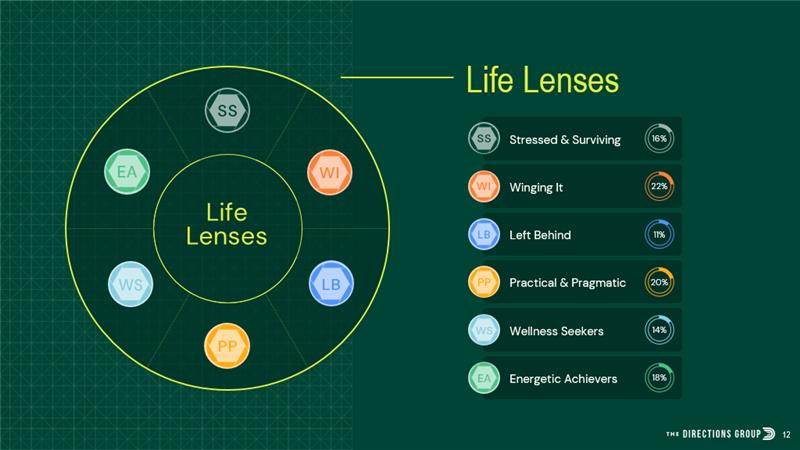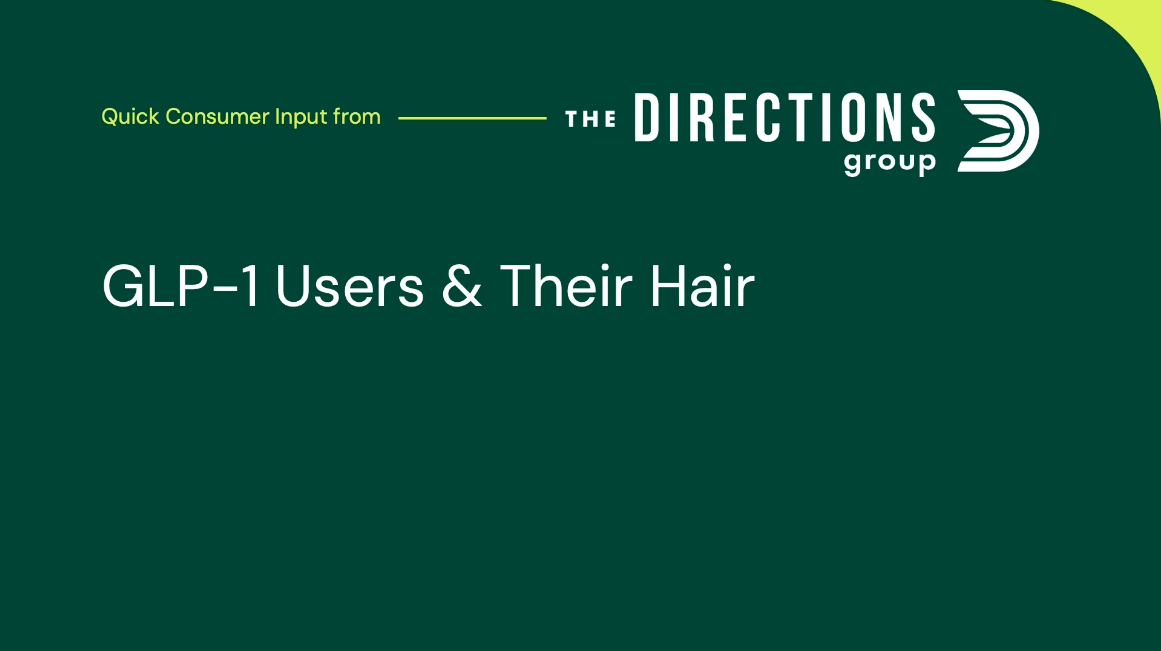Tightening Our Belts: Away-From-Home Eating in a Time of Economic Uncertainty
Now is a tough time to run a restaurant. Inflation and interest concerns1, labor shortages2, supply chain issues3 and tariff uncertainty4 have restaurant operators worried about the bottom line. Restaurants often survive on razor-thin margins (particularly quick-service restaurants, or QSR’s, which offer value options with small margins), and being able to predict traffic and optimize menus to match changing consumer preferences allows restaurants to waste as little food as possible.
These are not predictable times; we are in a time of rapidly-changing consumer confidence5 driven by equally-rapid policy shifts. These shifts have put American consumers into a place of uncertainty, and when consumers experience uncertainty, they tend to tighten their belts; both metaphorically by paying closer attention to their spending, and in a way physically by changing the way they eat.
But not every consumer reacts the same way; the way we think about our money and our restaurant spending depends on how we feel we are doing financially and how much we tie our eating to our overall sense of wellbeing. And there is a Tidal Wave of changing consumer behavior that determines how Americans are spending their money when it comes to their food, health, and wellbeing.
Our 2024-2025 American Life & Health Lenses study revealed six different Life Lenses that Americans have adopted in a variety of health-related categories, including eating away from home, in response to the changing state of American health. Through these Life Lenses we can see likely changes in eating behaviors as we weather economic uncertainty.

The QSR Mainstay Lenses (38% of American adults)
Let’s look at our most frequent QSR visitors first: those with the Winging It and Stressed & Surviving Life Lenses.

Winging It (22%)
Food Priorities: Balance > Principle
Economic Vulnerability: High
This “living for the moment" Lens has a high value for delight in their food choices, and will forgo higher-cost indulgences to seek out simple treats during economic tumult.
Stressed and Surviving (16%)
Food Priorities: Taste & Familiarity > Nutrition
Economic Vulnerability: High
This “just getting by” Lens has scarce time and money and is inundated with daily stressors that often put healthy/premium food choices on the backburner.
Americans with the Winging It and Stressed and Surviving lenses already feel cash-strapped and are particularly susceptible to increases in prices in all sorts of categories, with quick-service food/restaurant hitting particularly hard as they have the highest development in QSR usage across all six Lenses.
Winging It and Stressed and Surviving consumers are used to stretching their food dollar, often prioritizing familiar comfort foods and inexpensive and convenient foods over more premium fresh foods and ingredients. In times of economic uncertainty, they are even more likely to prioritize cost-savings foods over fresh/healthy foods than they are today, looking for those prepared foods and ingredients least impacted by inflation and tariffs: highly processed “center of store” ingredients and the prepared foods that feature them. In addition, their proclivity toward GLP-1 interest will flounder in economic disruption, leading to lower trial and sustained pauses in GLP-1 usage due to financial constraints.
These lenses often tend to lean on familiar, comforting foods during times of stress, and have an emotional connection to their food choices. Expect to see them increase convenience-store prepared food purchasing and "classic" QSR value-brand flagship offerings during this period of financial stress, deprioritizing the more premium fast casual and casual dining options.
Brands that major in their “classic” offerings while making the necessary changes (portion size, LTO bundles, etc.) to keep these items at a value-priced threshold will continue to attract these high-traffic customers and potentially lure them away from competitive brands that simply quietly increase prices of familiar menu items to meet rising food costs.
The QSR Convenience-Seeker Lenses (31% of American adults)
In the middle of the QSR spectrum are the Left Behind and Practical & Pragmatic Lenses; those who make QSR a part of their regular routine and may not be as cost-conscious as the QSR Mainstays but are focused on what makes sense for their lifestyles.

Left Behind (11%)
Food Priorities: Convenience > Everything else
Economic Vulnerability: Medium
This "it is what it is” Lens feels little connection to their food; they worry little about their health, they eat when they are hungry, and grab whatever is convenient while they are out.
Practical & Pragmatic (20%)
Food Priorities: Familiar > Fancy
Economic Vulnerability: Medium
This “trying my best” Lens has tried dieting and switching restaurants/brands to find healthier options but has found little success and tends to revert to familiar haunts that balance price, delight, and reasonable health standards.
Americans with the Left Behind and Practical & Pragmatic Lenses are creatures of habit and gravitate heavily towards convenience. While today, that takes them to the drive-thrus of one of a handful of the QSRs they are each loyal to, they are starting to get more price-sensitive as their familiar meals creep above the $10 line.
As economic conditions deteriorate through the global trade conflict and as the pressure of increased costs outside of away-from-home dining really set in, the Left Behind and Practical & Pragmatic consumers will begin to deviate from their familiar habits in search of reliably affordable convenience. While they won’t go out of their way to try new brands (again, convenience), they will wander from their daily/weekly routines to catch new value meals and LTOs from brands they typically pass by, as they will search for their new normal in a price range that feels more long-term tenable.
Brands that keep meals under/around $10 and still fully satisfy will catch their attention, and they will forfeit some of their healthier aspirations (particularly the Practical & Pragmatic Lens) in order to stick to a reasonable monthly dining budget.
The QSR Lifestyle-Seekers (32% of American adults)
At the far end of the Empowerment Spectrum are the Wellness Seekers and the Energetic Achievers: they are frequent diners-out and have a special place in their heart for QSR as they build away-from-home food into their aspirations for a healthy, balanced lifestyle.

Wellness Seekers (14%)
Food Priorities: Nutrition >Convenience
Economic Vulnerability: Low
This "slow and steady” lens is working hard every day to improve their lives by improving their well being in myriad ways and still sees QSR as an integral part of a balanced lifestyle.
Energetic Achievers (18%)
Food Priorities: Nutrition > Cost
Economic Vulnerability: Low
This “create your future” Lens feels very empowered to impact their own happiness and healthspan by spending their time and money on things that sharpen them, improve their health, and get them closer to their life goals.
Americans with the Wellness Seekers and Energetic Achievers Lenses spend more money on dining-out than the other Lenses, and they do so through a combination of frequency (more occasions) and higher spend-per-occasion, often seeking out fast-casual and casual dining over QSR.
These consumers are heavily focused on ingredients, as they believe that what goes into a dish determines its quality and has a direct impact on both your enjoyment and its impact on your wellbeing. While they have not historically been price-sensitive, instead prioritizing fresh and high-quality ingredients over bottom-line cost, they are beginning to make some consolations in their food choices to try to balance cost and ingredient quality.
As economic conditions get more tumultuous, expect Wellness Seekers and Energetic Achievers to reduce their away-from-home food spending, cooking more meals at home as they seek to keep their high-value ingredients while reducing spend.
Brands that capture their away-from-home spending will be those that maintain a high-quality ingredient and thoughtful brand story while costs increase... these Lenses are more price-tolerant than their counterparts but will use their more time-flexible lifestyles to default to at-home dining as price pressure exceeds their value threshold.

Learn More to Take Action Now
The QSR marketplace is unpredictable, especially right now. But with the right insight, consumer behavior isn’t, and these are just a few of the insights available in the full report.
Download the Executive Summary of the 2024-2025 American Life & Health Lenses study today and contact us to learn how you can take action now to capture value as American economics continue to shift.
Download the recently published QSR guide here for 5 critical growth strategies as it relates to the changing landscape of human health.
Sources
- Interest Rates Top Concern for Restaurant Owners: https://www.mediapost.com/publications/article/403923/interest-rates-top-concern-for-restaurant-owners.html
- $3 Dilemma: Restaurants Fight to Stay Afloat Amid Wage Hikes: https://foodinstitute.com/focus/3-dilemma-restaurants-fight-to-stay-afloat-amid-wage-hikes/
- Restaurant Inflation in 2025: What You Need to Know: https://foodinstitute.com/focus/3-dilemma-restaurants-fight-to-stay-afloat-amid-wage-hikes/
- Restaurants Warn of Potential $12 Billion Hit From Trump Tariffs: https://news.bloomberglaw.com/international-trade/restaurants-warn-of-potential-12-billion-hit-from-trump-tariffs
- US Consumer Confidence Retreats in June: https://www.conference-board.org/topics/consumer-confidence/
July 11, 2025
Introducing ARIN - An AI-Powered Survey Companion
It can be really difficult to get consumers to meaningfully engage with online surveys. ARIN addresses this critical industry pain point by leveraging natural conversation to uncover deeper insights than ever before.
April 24, 2025
The Directions Group and Idealyst Innovation Form Strategic Partnership
The Directions Group, a strategic insights firm, and Idealyst Innovation, a pioneering agricultural solutions company, have announced a strategic partnership designed to bring expanded intelligence services to the industry to empower agribusinesses and their farming and ranching customers.
September 19, 2024
New Study Highlights Widening Lifespan-Healthspan Gap and Implications of Evolving U.S. Health Landscape
The study, Preparing for the Tidal Wave, highlights the growing gap between lifespan and health span in the U.S., as well as six long-term trends impacting American health that will have a disproportionate influence on consumer behavior, policy, and innovation over the next decade.

Get started
Clarity in a Complex World
The problem isn’t a lack of information. The problem is the lack of clarity in the midst of more information than there has ever been.
At The Directions Group, we’re passionate about turning chaos into crystal-clear understanding that will bring you closer to your customer and drive real results for your business.
At The Directions Group, we’re passionate about turning chaos into crystal-clear understanding that will bring you closer to your customer and drive real results for your business.










